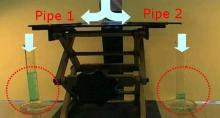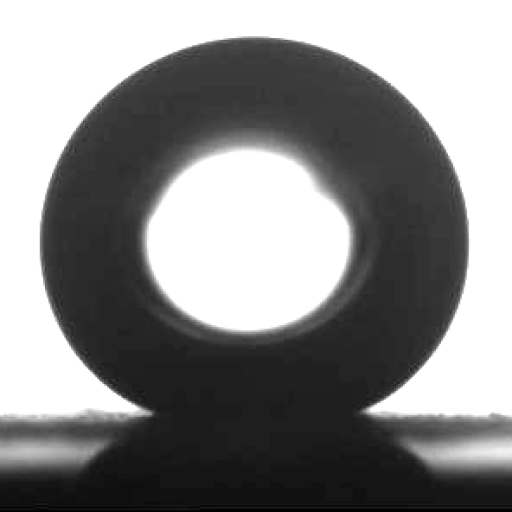Flow Through Pipes
We have seen that the Leidenfrost effect stops a droplet of water deposited on a hot surface from instantly vaporizing. This leads to a discussion of whether it is possible to create vehicles that travel on a bed of air. The first scientific descriptions of possible air-cushioned vehicles first arose a century ago. By the 1950s, a technical solution to creating a layer of air between the hull of a boat and the surface of water to reduce drag had been found with the invention of the hovercraft, but this required the active production of a layer of air.

Is it possible to create a superhydrophobic surface that always ensures water flows across a layer of air, thus lubricating its passage without the need for active input of energy? In the video above, the flow of water through two millimetric diameter copper tubes is compared. The only difference in the tubes is that one has a superhydrophobic copper nanoribbon internal surface and the other does not. We find that at low flow rates, the flow is faster through the tube with the superhydrophobic coating.
Publications
- Superhydrophobic copper tubes with possible flow enhancement and drag reduction N.J. Shirtcliffe, G. McHale, M.I. Newton and Y. Zhang, ACS Appl. Mater. Interfaces 1 (2009) 1316-1323
- Immersed superhydrophobic surfaces: Gas exchange, slip and drag reduction properties G. McHale, M.I. Newton and N.J. Shirtcliffe, Soft Matter 6 (2010) 714-719
- Plastron induced drag reduction and increased slip on a superhydrophobic sphere G. McHale, M.R. Flynn and M.I. Newton, Soft Matter 7 (2011) 10100-10107
